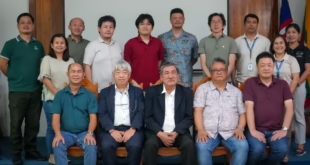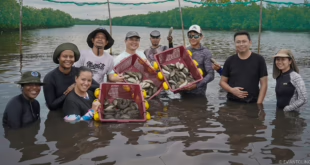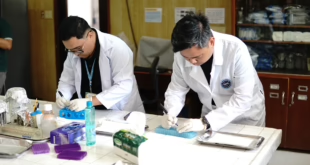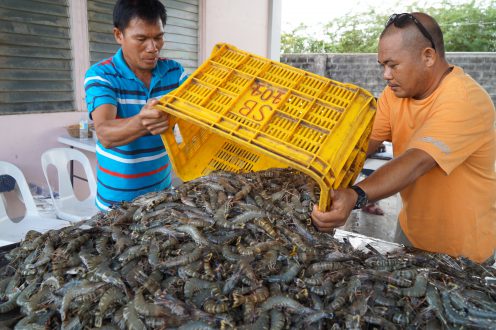
By J Genilza, RD Dianala
A recent harvest of almost three tons of tiger shrimp, locally known as lukon or sugpo, lifts hopes of reviving the multi-million dollar industry which had its heydays in the 90s.
The harvest at the Dumangas Brackishwater Station of the Southeast Asian Fisheries Development Center (SEAFDEC) shows that tiger shrimp farming, when done properly, is still a profitable venture.
About 2,800 kilograms of the sought after tiger shrimp, valued at P1.4 million, was harvested last October 28, 2019 after 113 days of semi-intensive culture in a half-hectare pond.
The shrimp achieved a remarkable survival rate of 93 percent and an average weight of 30 grams each – a glittering figure compared to the devastating losses in the late 90s when entire farms were wiped out due to the outbreak of shrimp diseases.
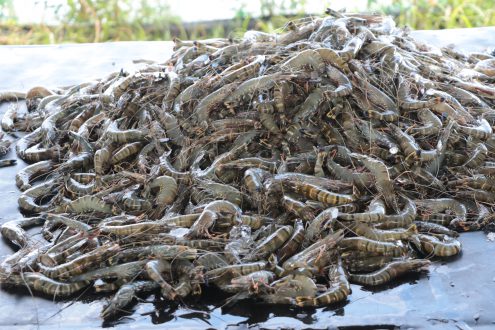
Preliminary economic analysis by SEAFDEC shows a 55 percent return on investment from the pond of 5,000 square meters, which means payback period is about a year, given two croppings per year.
To achieve the harvest, SEAFDEC adopted an environment-friendly scheme of shrimp farming using green water technology, sludge collectors, probiotics, and strict pond management.
SEAFDEC Aquaculture Department chief Dan Baliao said the technology is “easy to adapt and apply” for shrimp farmers and is “proven effective if given the proper aquaculture management.”
Biosecure shrimp hatchery
Baliao also revealed that the shrimp fry stocked in the ponds were produced in SEAFDEC’s hatchery in Tigbauan, Iloilo which is fitted with biosecurity features to prevent the entry of fatal shrimp bacteria and viruses.
Strict quarantine procedures are implemented for shrimp spawners that are delivered to the facility. A disinfection building for staff and visitors, UV sterilizers, and completely enclosed rearing facilities coupled with twice-a-week screening for diseases ensure the shrimp are healthy before they are stocked in ponds.
The hatcheries were recently built as part of SEAFDEC’s banner program, “Oplan Balik Sugpo,” launched in 2017 under the administration of Baliao, which aims to revive the tiger shrimp industry.
Baliao said the technology updates will be detailed to stakeholders during the 12th Philippine Shrimp Congress on November 20 to 22 at the SMX Convention Center in Bacolod City.
 SEAFDEC/AQD Southeast Asian Fisheries Development Center | Aquaculture Department
SEAFDEC/AQD Southeast Asian Fisheries Development Center | Aquaculture Department
